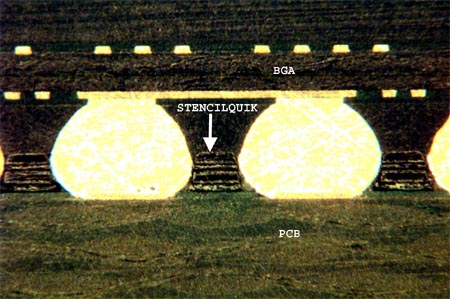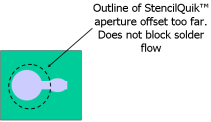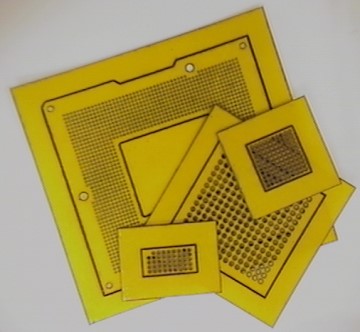No, after removal of a BGA the solder mask may be damaged when wicking braid is used to remove residual solder. If this is the case, there is no need to repair the solder mask. The StencilQuik™ stencil will prevent the solder from migrating down the "dogbones" to the vias. The two 2-dimmensional X-Ray images that follow Clearly demonstrate the mask Repair properties of StencilQuik™. In both case the mask was Completely stripped from two Test vehicle boards. The first image Shows the ball patterns of a BGA Reworked using StencilQuik™. Note Uniformity of the solder ball patterns. In the second image a traditional Metal stencil was used to apply the Solder paste pattern to the board. Note the areas in which solder shorts Occurred and where the solder went Down the dogbone to the via, Thereby starving the solder joint.




